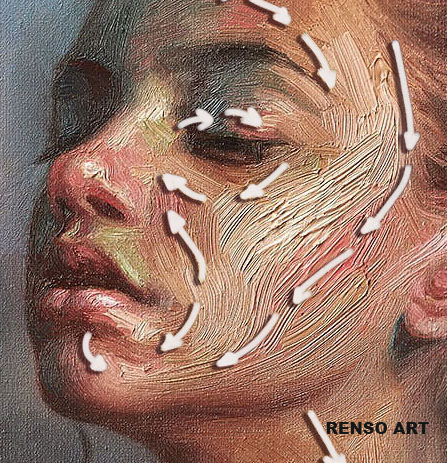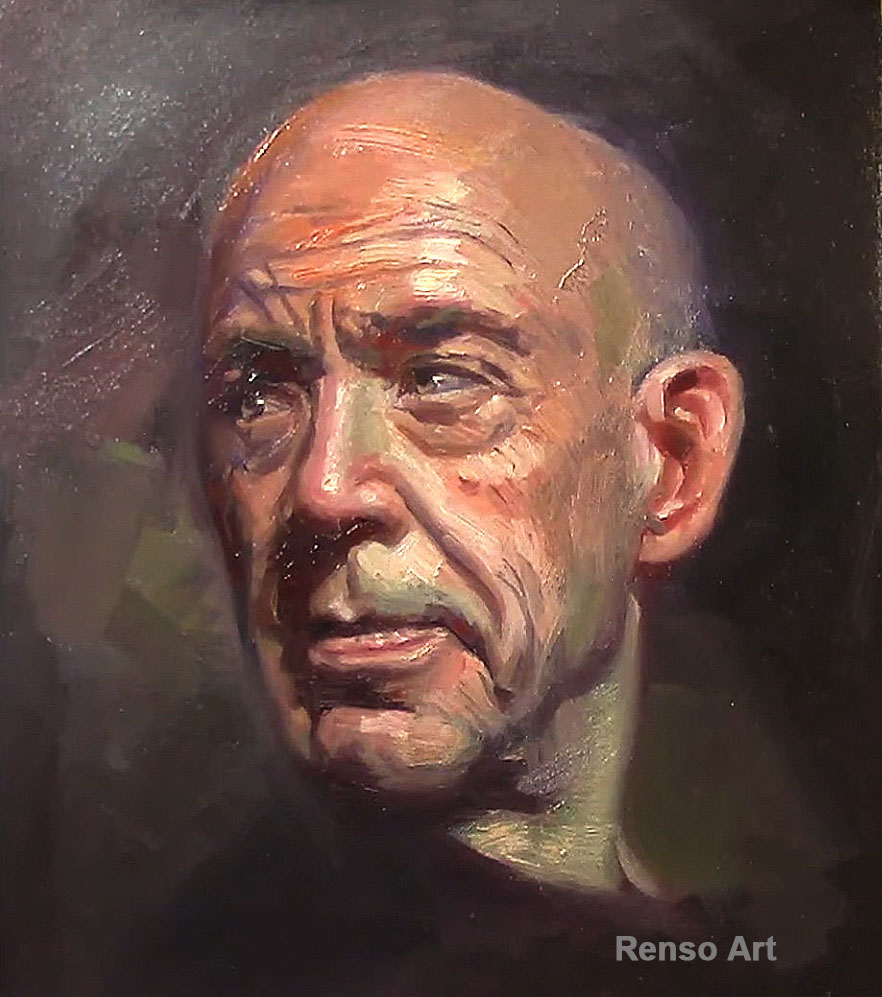Struggling with your portraits? You might find my E-book helpful. Click here
When we paint a Portrait, we often think about color, value, and anatomy — but there’s something more subtle that gives the portrait life: the rhythm of the brushstrokes.
Every stroke carries direction, energy, and emotion. The way you move your brush can suggest the roundness of the cheek, the softness of the lips, or the quiet strength in a forehead. It’s not only what you paint — it’s how you move while painting.
Brushstrokes That Follow the Form
Imagine light flowing over the face like water. If your strokes follow that same flow — curving gently around the cheekbones, turning softly under the chin — the painting begins to breathe.
Each stroke should describe the form, not just fill in color. When your brush follows the planes of the face, you create movement and volume, even in stillness.
Try painting with your brush dancing around the structure — from the forehead to the temple, from the nose toward the ear. Think in rhythms, not just shapes.

The Music Within the Painting
Brushwork has rhythm, like music. Some passages need long, lyrical strokes; others short, quick accents.
Too much repetition feels mechanical; too much variation feels chaotic. The art is in balancing control and freedom.
If you’ve ever watched a great painter work, you can almost hear a melody in their movements — slow passages in the shadows, brighter notes in the highlights.

Let Edges Dance
Edges are where rhythm becomes visible. Hard edges stop the eye; soft edges let it move.
On the skin, it’s often better to lose some edges — let colors merge and flow. The viewer’s eye will connect what’s missing. This creates a sense of life, because real skin is never perfectly outlined.

Your Hand, Your Personality
No two artists paint brushstrokes the same way. Your rhythm is as unique as your handwriting.
The more you paint, the more natural that rhythm becomes.
So instead of trying to make the perfect stroke, focus on feeling the form beneath your brush. That sensitivity is what gives a portrait its heartbeat.
If your portraits ever feel stiff, don’t change the subject — change the rhythm.
Let the movement of your strokes follow the energy of the person you’re painting.
When the brush moves with intention and feeling, the painting begins to move too.